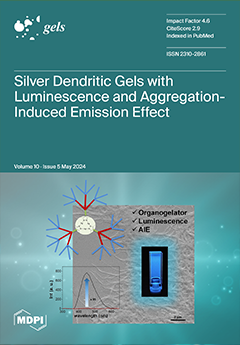To determine the evolution of microbial community and microbial shift under anaerobic processes, this study investigates the use of denaturing gradient gel electrophoresis (DGGE). In the DGGE, short- and medium-sized DNA fragments are separated based on their melting characteristics, and this technique is
[...] Read more.
To determine the evolution of microbial community and microbial shift under anaerobic processes, this study investigates the use of denaturing gradient gel electrophoresis (DGGE). In the DGGE, short- and medium-sized DNA fragments are separated based on their melting characteristics, and this technique is used in this study to understand the dominant bacterial community in mesophilic and thermophilic anaerobic digestion processes. Dairy manure is known for emitting greenhouse gases (GHGs) such as methane, and GHG emissions from manure is a biological process that is largely dependent on the manure conditions, microbial community presence in manure, and their functions. Additional efforts are needed to understand the GHG emissions from manure and develop control strategies to minimize the biological GHG emissions from manure. To study the microbial shift during anaerobic processes responsible for GHG emission, we conducted a series of manure anaerobic digestion experiments, and these experiments were conducted in lab-scale reactors operated under various temperature conditions (28 °C, 36 °C, 44 °C, and 52 °C). We examined the third variable region (V3) of the 16S rRNA gene fingerprints of bacterial presence in anaerobic environment by PCR amplification and DGGE separation. Results showed that bacterial community was affected by the temperature conditions and anaerobic incubation time of manure. The microbial community structure of the original manure changed over time during anaerobic processes, and the community composition changed substantially with the temperature of the anaerobic process. At Day 0, the sequence similarity confirmed that most of the bacteria were similar (>95%) to
Acinetobacter sp. (strain: ATCC 31012), a Gram-negative bacteria, regardless of temperature conditions. At day 7, the sequence similarity of DNA fragments of reactors (28 °C) was similar to
Acinetobacter sp.; however, the DNA fragments of effluent of reactors at 44 °C and 52 °C were similar to
Coprothermobacter proteolyticus (strain: DSM 5265) (similarity: 97%) and
Tepidimicrobium ferriphilum (strain: DSM 16624) (similarity: 100%), respectively. At day 60, the analysis showed that DNA fragments of effluent of 28 °C reactor were similar to
Galbibacter mesophilus (strain: NBRC 10162) (similarity: 87%), and DNA fragments of effluent of 36 °C reactors were similar to
Syntrophomonas curvata (strain: GB8-1) (similarity: 91%). In reactors with a relatively higher temperature, the DNA fragments of effluent of 44 °C reactor were similar to
Dielma fastidiosa (strain: JC13) (similarity: 86%), and the DNA fragments of effluent of 52 °C reactor were similar to
Coprothermobacter proteolyticus (strain: DSM 5265) (similarity: 99%). To authors’ knowledge, this is one of the few studies where DGGE-based approach is utilized to study and compare microbial shifts under mesophilic and thermophilic anaerobic digestions of manure simultaneously. While there were challenges in identifying the bands during gradient gel electrophoresis, the joint use of DGGE and sequencing tool can be potentially useful for illustrating and comparing the change in microbial community structure under complex anaerobic processes and functionality of microbes for understanding the consequential GHG emissions from manure.
Full article






